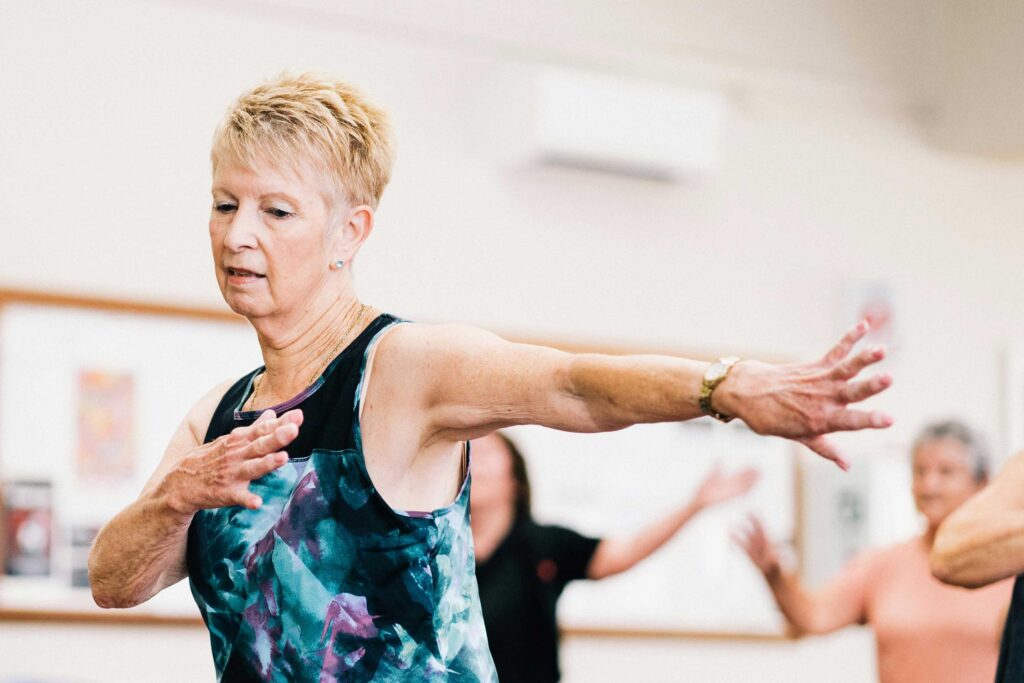Cuando cuidas tu cuerpo, también cuidas tu mente. Ya sea que prefieras la jardinería, andar en bicicleta o jugar con tu perro, mover el cuerpo puede mejorar tu estado de ánimo, motivación y confianza.
Contenido de este artículo:
Cómo ayuda la actividad física
Puntos principales
La actividad física ayuda a tu cuerpo y a tu mente: El ejercicio puede mantenerte saludable al prevenir enfermedades, ayudarte a dormir mejor y fortalecer tu sistema inmunitario. El ejercicio también beneficia a tu cerebro al reducir el estrés, mejorar la concentración y hacerte sentir más feliz.
Cualquier movimiento cuenta: No tienes que ir al gimnasio para estar activo. Caminar, bailar, jugar, limpiar o incluso moverte mientras ves la televisión puede ayudarte. Encuentra actividades que disfrutes para que puedas mantenerlas.
Mantente a salvo y sigue adelante: Empieza despacio, calienta antes de hacer ejercicio y no te esfuerces demasiado. Bebe agua, enfría después de entrenar y escucha a tu cuerpo. Si te saltas algunos días, ¡no te rindas! Sé compasivo contigo mismo y empieza de nuevo.
Cómo ayuda la actividad física
Moverse con regularidad tiene muchos beneficios para la salud física, como prevenir enfermedades cardíacas, mejorar el sueño y fortalecer el sistema inmunitario. Pero la actividad física también puede desempeñar un papel importante en el cuidado de la salud mental.
Las investigaciones muestran Que el movimiento aeróbico (como caminar, correr o nadar) puede mejorar los síntomas de ansiedad y depresión. Esto sucede porque la actividad física libera sustancias químicas que nos hacen sentir bien en el cerebro, como serotonin y dopaminaMover el cuerpo también puede ayudarte. pensar con más claridad, mejora tu concentración, y disminuir el estrés.
¿Cuánta actividad física necesitas?
Para su salud en general, la La Asociación Estadounidense del Corazón (AHA) recomienda:
- Al menos 150 minutos por semana de actividad aeróbica de intensidad moderada o 75 minutos por semana de actividad aeróbica vigorosa, o una combinación de ambos, preferiblemente distribuidos a lo largo de la semana.
- Añadiendo intensidad moderada a alta actividad de fortalecimiento muscular (como resistencia o pesas) en al menos dos días a la semana.
Pero si recién estás empezando o no tienes tiempo, la AHA también dice que Cualquier actividad es mejor que ningunaRealizar una caminata rápida durante cinco o diez minutos varias veces al día sumará beneficios. Breves ráfagas de actividad Todavía puede tener un impacto positivo en la salud mental.
Elige lo que funcione para ti
La actividad física se presenta de muchas maneras. Si bien actividades como tomar una clase de yoga o levantar pesas son beneficiosas, es posible que no sean accesibles para ti. Incluso puede que no las disfrutes.
En cambio, Intenta abrir tu mente sobre lo que se considera “actividad física”. Actividades como lavar el coche, cortar el césped o subir las escaleras pueden aumentar el movimiento que haces a lo largo del día. Intenta encontrar actividades que te resulten agradables o que puedas incorporar fácilmente a tu rutina.
Algunos ejemplos de actividades que podrías incorporar a tu rutina son:
- En realidad correr mandados: Camine un poco más rápido o más lejos en el estacionamiento cuando se detenga en la tienda.
- Jugando: Compite con los niños, lanza algunos baloncesto o conecta con tu niño interior y juega algunos juegos que solías disfrutar.
- Depuración: En lugar de unas cuantas pasadas aquí y allá, limpia enérgicamente durante 10 minutos.
- Baile: ¡Enciende tu música favorita y déjate llevar; permítete divertirte!
- Viendo la televisión: Sí, mirar televisión, mientras caminas en el mismo lugar, levantas las piernas o golpeas el aire.
Consideraciones de salud
- Antes de comenzar a hacer ejercicio, Sería buena idea consultar con tu médico si no has hecho actividad física durante un tiempo. Además, probablemente tendrás que aumentar la intensidad poco a poco. Por ejemplo, durante la primera semana, podrías intentar caminar dos días durante 15 minutos cada uno. Después, puedes aumentar gradualmente la cantidad de días y minutos por sesión durante algunas semanas.
- Calienta suavemente tu cuerpo Antes de comenzar tu rutina de movimiento, empieza despacio para que tus músculos y articulaciones se relajen, lo que previene lesiones. Algunas actividades de calentamiento que puedes probar son: saltos de tijera, estiramientos, círculos con los brazos, trote ligero, etc. Unos cinco o diez minutos de calentamiento suelen ser suficientes.
- Recuerde hacer ejercicio con moderación. Puede resultar satisfactorio alcanzar nuevas metas durante el entrenamiento, como levantar más pesas o correr más de lo habitual. Pero no te esfuerces hasta el punto de sentir dolor, mareos o dificultad para respirar.
- Enfriarse moviéndose más lentamente durante unos cinco a diez minutos al final de su entrenamiento para que su frecuencia cardíaca y su temperatura corporal vuelvan a la normalidad.
- Estirar Para relajar los músculos que has usado. No fuerces más allá del punto de tensión ni rebotes.
- Beber agua Antes, durante y después de entrenar. Si esperas a tener sed, ya te estás deshidratando.
Cómo mantener la constancia
Mantenerse físicamente activo con regularidad puede ser un desafío, especialmente si padeces una enfermedad mental. Puede resultar difícil motivarse o retomar una rutina de ejercicios después de haberla dejado por un tiempo. Aquí tienes algunos consejos para ayudarte a mantener la constancia y obtener todos los beneficios para la salud mental que aporta la actividad física:
Lleva un registro: Anota por qué quieres hacer ejercicio, algunas metas realistas y tus logros. Ver por escrito lo que esperas y lo que has logrado puede aumentar tu motivación. Puedes imprimir un registro semanal para seguir tu progreso.
Anótalo en tu calendario: Programa la actividad física como cualquier otra cita importante. Esto le indica a tu cerebro que la actividad física es una prioridad para ti.
Hazlo divertido: Es mucho más probable que te quedes con algo que disfrutas. Si tu rutina te resulta aburrida o pesada, prueba algo nuevo. También puedes gamificar tu entrenamiento con juegos como Pokémon GO o Just Dance.
Busca un amigo: Hacer ejercicio con un amigo puede hacer las cosas más emocionantes. Además, a veces es más difícil romper un compromiso con otra persona que con uno mismo.
Elimina las barreras: Piensa en qué te impide mantener la constancia. Luego, busca maneras de superarlas. Si estás demasiado cansado al final del día, intenta entrenar por la mañana. Si te intimida entrenar en lugares públicos, hazlo en casa. Encuentra las opciones que mejor se adapten a ti y a tus necesidades.
Practica la autocompasión: Que te hayas perdido unos días, o incluso unas semanas, no significa que tengas que rendirte por completo. Recuerda reconocerte por cualquier paso adelante, por pequeño que sea.
Recompénsate: Sí, cumplir tus objetivos es una recompensa en sí misma, pero un pequeño detalle también es muy bueno. Recompensarte también puede ayudarte con la motivación. Por ejemplo, una vez que hayas alcanzado una meta de running, podrías regalarte unos calcetines o zapatillas de running nuevos y divertidos.
Lo más difícil de la actividad física suele ser empezar. Haz lo posible por ser compasivo contigo mismo a medida que avanzas y busca apoyo siempre que lo necesites.
Recursos de MHA
- Cuando cambiar de ejercicio es difícil: Hoja de trabajo (PDF)
- Hacer ejercicio puede ser difícil, ¡pero es bueno para la salud mental! 9 consejos fáciles
- Dieta y nutrición
- Llevar la actividad física demasiado lejos durante el verano
- 10 formas saludables de liberar la ira
- ¿Puede el yoga ayudarme a mejorar mi salud mental?
- ¿Se puede tener un trastorno alimentario si no se está delgado?
- Deja de perseguir la perfección: Crea hábitos duraderos en 2025 (Blog)
Encuesta
Realiza una prueba gratuita de salud mental
 Visite mhascreening.org para tomar una prueba de salud mental anónima, gratuita y privada. Solo toma unos minutos, y después de terminar recibirá información sobre los próximos pasos que puede tomar de acuerdo con los resultados.
Visite mhascreening.org para tomar una prueba de salud mental anónima, gratuita y privada. Solo toma unos minutos, y después de terminar recibirá información sobre los próximos pasos que puede tomar de acuerdo con los resultados.


